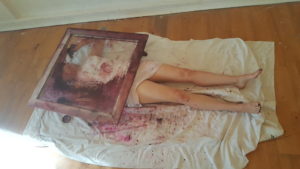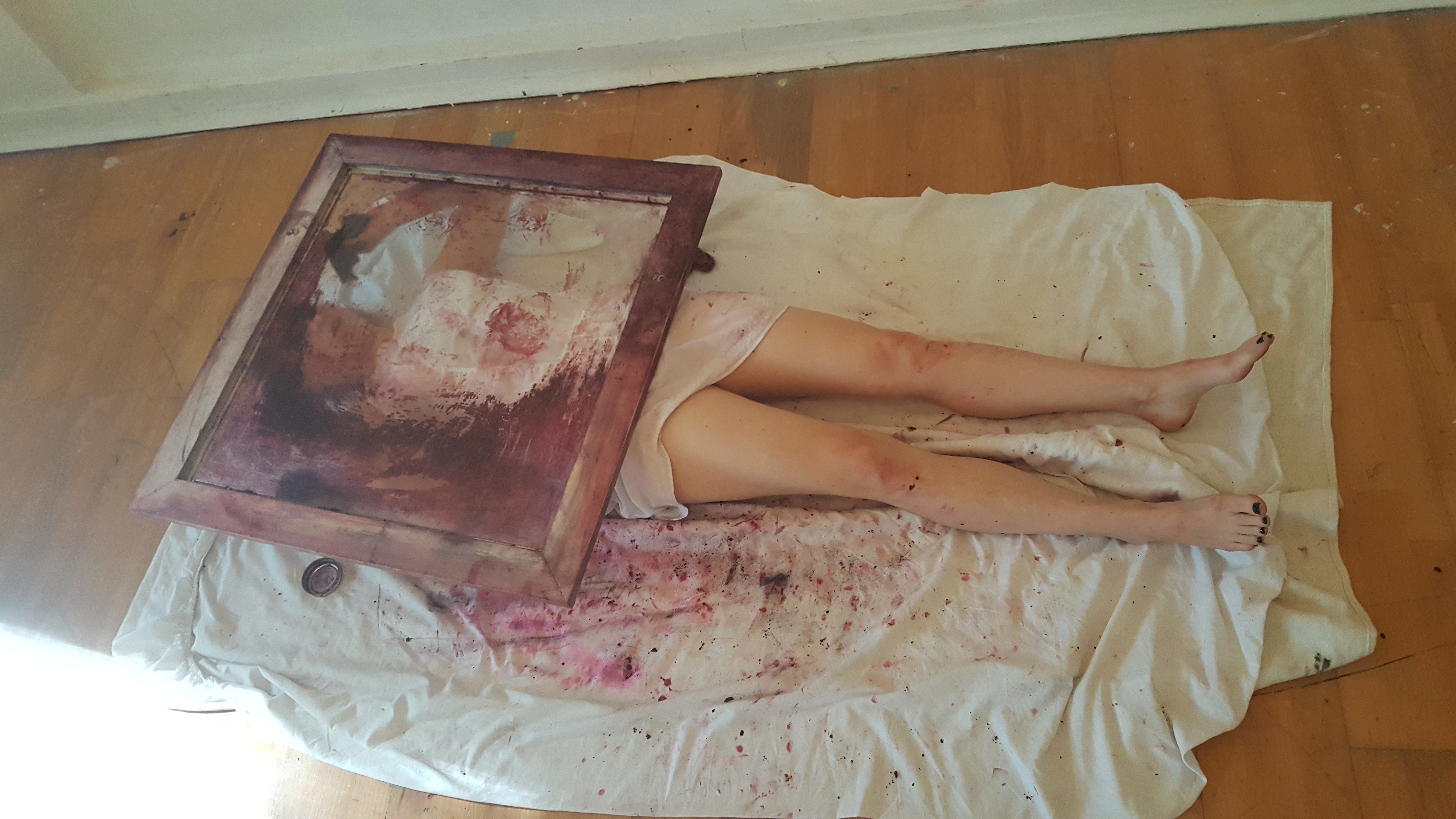
September has gone by in a whirlwind – a fantastic feminist, thought provoking, creative, supportive, informative and busy month.
I spent the month as part of the 35 women artists involved in the pilot residency Mother House set up by Dyana Gravina of the ProCreate Project and Amy Dignam of Desperate Artwives. Once a week I went to the shared studio space where cooperative childcare reigned, Artists of very varied practices gathered to talk, observe, create and collaborate.
I posted previously about one of the collaborations I have begun with Dyana Gravina, a piece that may become a series currently called Body in Translation. In the month I also took part in the project ‘Orbits project’ by Ijad dance company and made a short film for them after attending their live event at FACT in Liverpool.
The other collaborative piece that I was fortunate to work on was ‘shoe polish, spit and glass’. This was based on a piece by Amy Dignam called ‘peas in a bucket’ where she repeatedly picked up peas for a period of fifteen minutes to begin to consider the repetitive actions of motherhood. For our collaborative piece three of us; Amy, Dyana and myself shared a repetitive task (Co ering glass with shoe polish and then removing it) over 6 hours beginning to explore for ourselves thoughts of repetitive tasks in parenthood but also in life and work.
On Sat 1st October I took part in a panel discussion based on the question ‘Mother Artists: Did we become our own audience?’. This was a delicious afternoon of debate and discussion around mother art, what the ‘right’ audience should or could be….. e.g. why is a mother audience considered a negative thing? What a space like motherhouse can do, what are it’s limitations and how does it move forward? There were some very interesting readings of papers and thoughts by a whole range of people in the art world including: Grace Acton (Artist and visual arts coordinator for Greenbelt), Rose Gibbs (Visual Artist and feminist activist), Susan Kelly (Senior lecturer and course leader at Goldsmiths) Barbara Phillip (Visual and performance artist), Shira Richter (Artist and activist), Deirdre Donoghue (artist and PhD researcher of Mother Voices foundation) and Terri Hawkes (writer, director and producer, Demeter press, Canada).
The editor of n.paradoxa Katy Deepwell gave an overview of the wealth of knowledge already available with regard to feminist and mother artists and artists over the past 20 years and n.paradoxa’s fantastic archive and list of publications asking what we can do in ‘addition’ to or in ‘response’ to what has already been done. Find them here: http://www.ktpress.co.uk
And finally Mother House presented an open day on Sunday 9th Oct in which works were exhibited, performances happened and a brief and beautiful teaser of the future documentary about the Mother House was shown.
So what has it done for me?
I feel that my separate world’s, my separate ‘lives’ came together this month. There was no need to hide that I was a mother, it could be embraced and fully a part of me and my work if I wanted. But I also realised that even if I don’t make work ‘about’ being a mother. It may be just as important to be recognising that I AM a Mother. As I feel it’s important to recognise I am a woman, a feminist and working class. Why? Well for my own work and development I need to acknowledge my own viewpoint. My experiences and my position/s in life affect my viewpoint and artistic position. Also these will change as I go through my life and this will be reflected in my work. The other reason is multi- layered but lies at the face of the persistence of inequality. There is still a huge discrepancy in representation of work by men and work by women in major galleries and exhibitions. There are still far more men making a living from working as Artists than women. There is still an attitude that women feel they need to hide the fact that they are mothers when working as an Artist. If we do not acknowledge that we are women, feminists and mothers, then that issue possibly remains invisible this risks for me perpetuating the idea that it is something to hide, an inferior subject matter or a label that makes one an inferior or less committed artist.
So this month I HAVE made work about being a mother, and it felt powerful, especially to use performance in that way and to do it with other mother artists.
I have also developed some ideas and questions around these spaces – whether they need to be female only, how male presence could benefit these spaces, whether we can have both, how do we continue to examine the hidden or less often spoken experiences of women and the missing language of these experiences but also close the gaps between male and female spaces? And always the main excitement for me – what power has language use with regard to such spaces and such discussions within the Art world?
